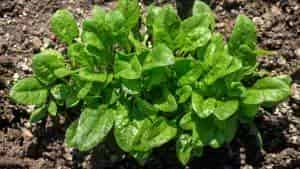Scientists have trained spinach capable to detect explosive, to deliver emails

Scientists at the Massachusetts Institute of Technology in the United States have recently managed to design spinach plants that make them capable of sending emails.
Spinach to detect explosives
According to news, MIT engineers have used nanotechnology to turn spinach into sensors capable of detecting explosive materials. The spinach plants will relay the information wirelessly to the scientists. When the presence of nitroaromatics, a substance also used in explosives such as landmines, is observed by spinach roots in groundwater, the carbon nanotubes in the leaves of the plant emit a signal. This signal is then read by an infrared camera that sends an email to the scientists.

Professor Michael Strano, who led the study, said that plants are successful analytical chemists. “They have an extensive root network in the soil, are constantly sampling groundwater and have a way to self-power the transport of that water up into the leaves”, said Professor Strano. The experiment is allegedly part of a larger study involving engineering electronic components and structures into plants. The technology is called ‘plant nano bionics’ and is a method of giving plants new abilities. “This is a novel demonstration of how we have overcome the plant/human communication barrier”, he added.
The goal of the experiment was to detect explosives. However, experts, like Strano, claim that the experiment could be used to alert researchers to emissions and other environmental factors. Plants are said to be best suited for tracking ecosystem changes due to the vast volume of data they absorb from their surroundings. Professor Strano allegedly used nanoparticles to turn plants into pollutant sensors in the early stages of the study. By modifying the mechanism of photosynthesis in plants, Professor Strano made them capable of detecting nitrogen oxide, a pollutant produced by combustion.
According to Professor Strano, the plants are very environmentally responsive. They know there’s going to be a drought even before they do it. They can detect minor differences in soil properties and capacity for water. If they tap into the chemical signalling channels, there is a variety of knowledge to be obtained.
Spinach can be used to make metal-air batteries
In addition, scientists have recently found that when spinach is transformed into carbon nanosheets, it can serve as a catalyst to help make metal-air batteries and fuel more efficient. Professor Shouzhong Zou, who led the research paper, said, “This work suggests that sustainable catalysts can be made for an oxygen reduction reaction from natural resources”. Metal-air batteries are more powerful than lithium-ion batteries that are widely used in consumer goods such as smartphones.
“The method we tested can produce highly active, carbob-based catalysts from spinach, which is renewable biomass. In fact, we believe it outperforms commercial platinum catalysts in both activity and stability”, said Professor Zou.
The explanation behind the selection of spinach was that it has a lot of iron and nitrogen, which are essential elements in compounds that act as catalysts. In order to make spinach ideal for the process, researchers have converted it into nanosheets.


